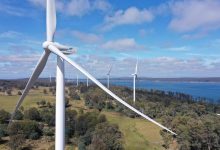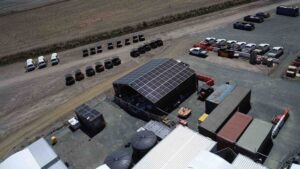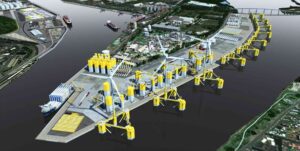The world’s first 100 per cent recyclable wind turbine blades could soon hit the market, with a consortium of French companies committing to close the gap to full recyclability through new innovative materials.
The vast bulk of wind turbine materials are made up of the steel used for wind turbine towers and metals used in generator components, which are already mostly recyclable, ensuring that 85 to 90 per cent of wind turbine components are already able to be re-used.
A consortium of French companies wants to close this gap, focusing on the fibreglass and resins used in the production of wind turbine blades, which make up the remaining 10 to 15 per cent of the components of a wind turbine, ensuring that they too are able to be recycled.
The ZEBRA project (Zero wastE Blade ReseArch), is being led by the IRT Jules Verne located just outside of Nantes in France, and has been formed as a partnership between French research institutions, wind turbine designers and manufacturers and utilities giants Engie and Suez.
The consortium will partner in the development of new materials that can be used in turbine blade manufacturing, including the development of new resins and composite materials that reduce the amount of resources required in the production of blades, while also allowing the materials to be recycled when wind turbines are decommissioned.
Project partners have committed up to €18.5 million (A$30.6 million) to the project’s budget, which will aim to demonstrate the economic and environmental viability of thermoplastic wind turbine blades that will enable recycling.
ZEBRA project manager, Céline Largeau, said the project would draw upon a closed-loop lifecycle approach for the wind turbine blades, ensuring the materials used to produce the blades are recovered and re-used to produce new blades.
“Demonstrating a circular approach to wind turbine blades throughout their lifetime requires mobilizing a strategic consortium covering the whole value chain to guarantee valuable and precise industrial data and achievements,” Largeau said.
“The ZEBRA project is a great opportunity to join together Arkema, CANOE, ENGIE, LM Wind Power, Owens Corning and Suez who are key leaders in the wind energy sector. We look forward to carrying out constructive work altogether to improve wind energy performance and efficiency.”
Senior director for advanced technology systems for wind turbine blade manufacturer LM Wind Power, Torben K. Jacobsen, which has joined the ZEBRA consortium as a partner, said the use of innovative materials in the production of wind turbine blades would be key to improving their performance and longevity, as well as allowing the blades to be recycled at the end of their life.
“As a key player in the transition to affordable, renewable energy sources across the world, the wind power industry works actively to develop new materials with higher performance, longer lifespan and recyclable properties,” Jacobsen said.
“We are thrilled to be a launching partner for a truly recyclable blade for future wind turbines, leading the way to a sustainable world that works for generations to come.”
The announcement follows the awarding of funding to Australian researchers seeking to improve the recyclability of solar panel materials. The University of New South Wales will use a $10 million NSW government grant to improve practises around the collection and processing of solar panels, to ensure they do not end up in waste streams when they are disposed of.










